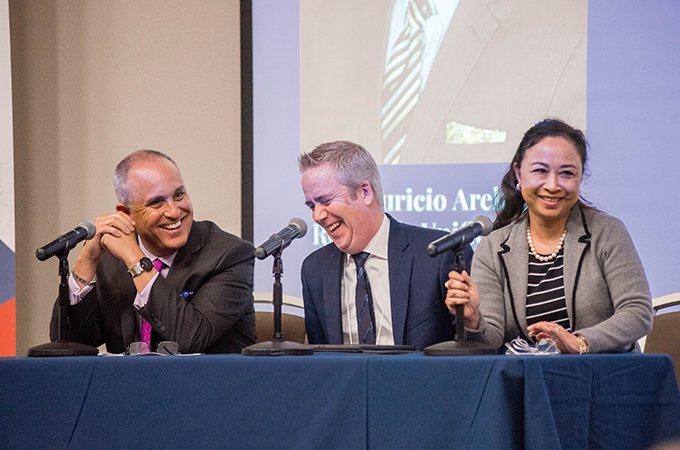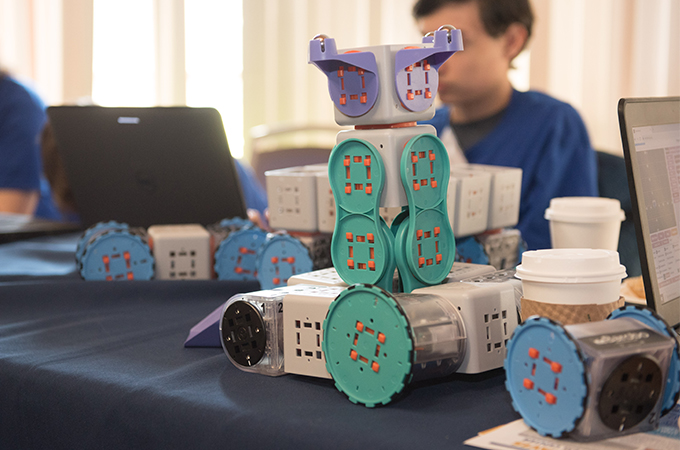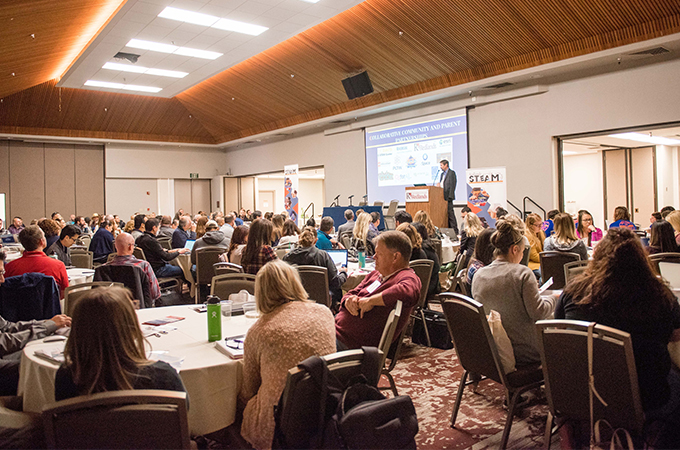On February 24, the University of Redlands set the stage for Southern California’s first Computing, Science, Technology, Engineering, and Mathematics (C-STEM) Education Symposium. A collaborative effort between the U of R, Redlands Unified School District, and University of California (UC), Davis, the day-long event brought together educators from across the region to discuss ways to transform math and computer science education with coding and robotics.
C-STEM is an educational preparation program for K-12 and community college students. Students’ participation in the program is recognized in the UC admissions process as an achievement readying students to attend college and launch a career in STEM fields.
"This symposium demonstrates the University of Redlands' leading role in attending to the needs of all K-12 students, including English learners, students with special needs, and students in poverty," said Professor and Director of the School of Education's Center for Educational Justice Jose Lalas.
Professor Harry Cheng, director of the UC Davis Center for Integrated Computing and STEM Education, welcomed the opportunity for exchanging insights in the field. He noted he and his center’s staff focus on developing and expanding the C-STEM curriculum, as well as closing the achievement gap by increasing participation of students traditionally underrepresented in computing- and STEM-related careers.
“We’re opening the gates for at-risk students by developing coding and robotics programs that will transform the classroom,” Cheng said. “Results don’t happen overnight, but schools have definitely been building momentum with the implementation of C-STEM programs.”
Tim Taylor, executive director of the Small School District Association, delivered the event’s keynote address, in which he shared his perspective that computers facilitate the flow of information and communication in a learning environment.
“What we want in all of our classrooms and from our educators is relevant teaching,” Taylor said. “C-STEM is relevant to kids’ needs and what interests them.”

The symposium’s speaker panels and breakout sessions focused around the idea of providing students with hands-on, interdisciplinary curricula in order to get them excited about math. A panel of superintendents featured representatives from Redlands Unified School District, Fontana Unified School District, and Hacienda La Puente Unified School District. They each spoke about efforts to help students who struggle with math and science.
Redlands Unified School District Superintendent Mauricio Arellano spoke about the district’s innovation grants encouraging teachers to seek out novel programs and technologies to implement in the classroom, and emphasized the need to allocate resources where they’re most needed.
“When I walk through classrooms, I see kids excited about math,” said Arellano. “Students are able to understand why they’re learning math because they’re using it in relevant ways in the classroom and are adopting 21st-century skills critical to their success.”

Between the symposium’s featured breakout sessions, teachers and administrators from local elementary, middle, and high schools shared their experiences with implementing coding and robotics into regular STEM courses. Allen Thoe, a math and computer science teacher from Citrus Valley High School, realized that students in his computer science elective class were having to learn many different kinds of math that were no longer included in the basic curriculum, so he started to implement lessons focused on STEM.
Thoe says the benefits he has seen have been twofold: “A lot of kids are excited and genuinely have fun with robotics—the perception of math is a lot more positive than it used to be. This curriculum also reignites the learner in all of us teachers.”
Learn more about the University of Redlands School of Education.






